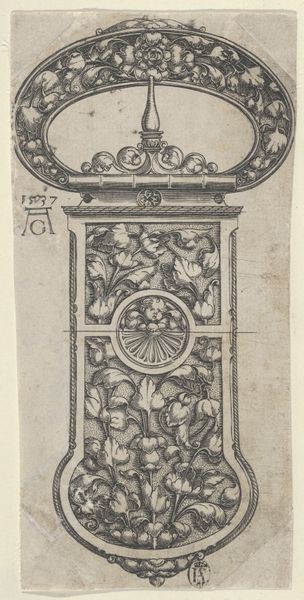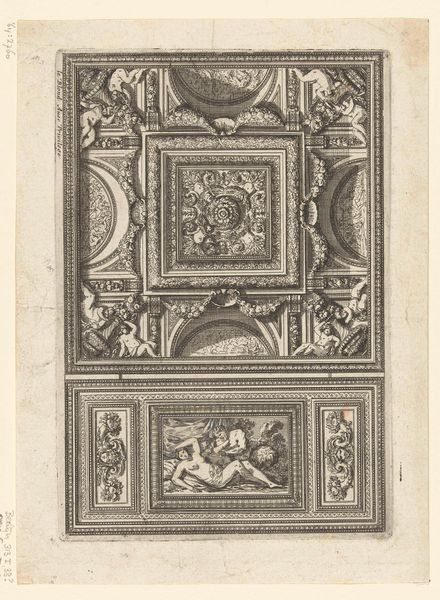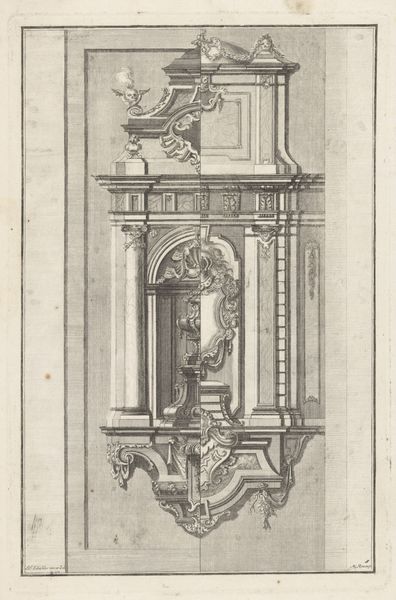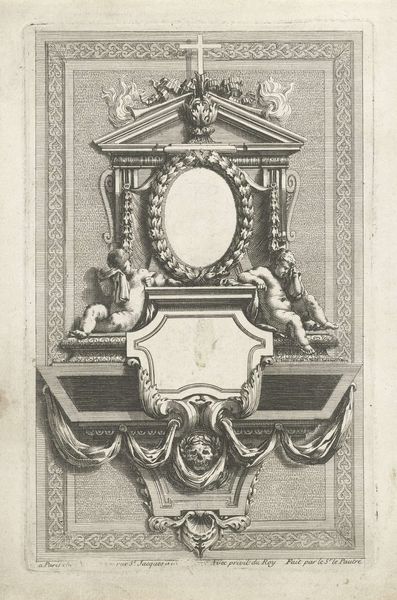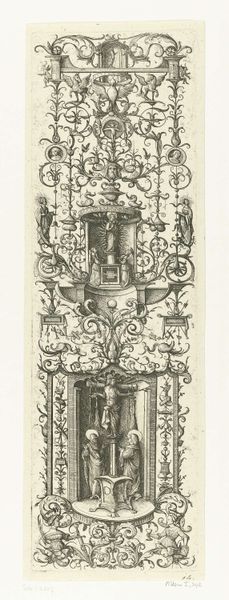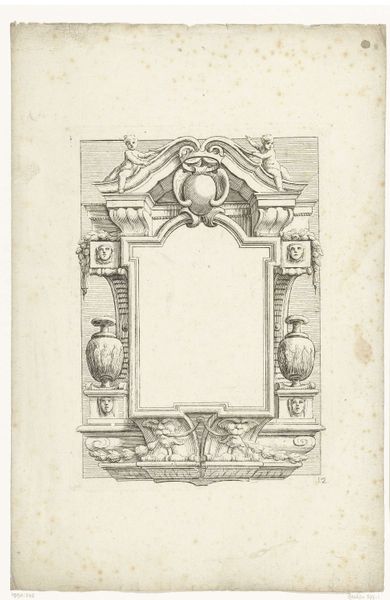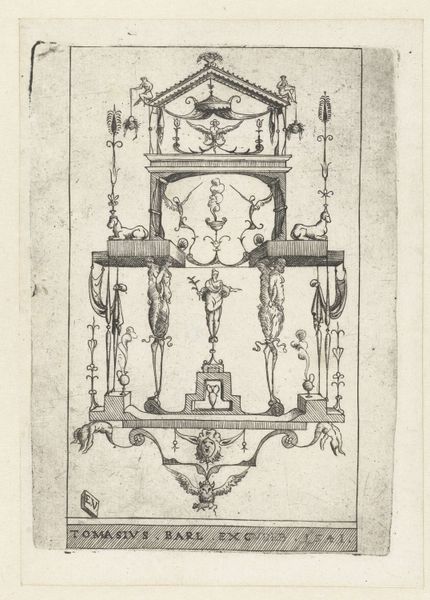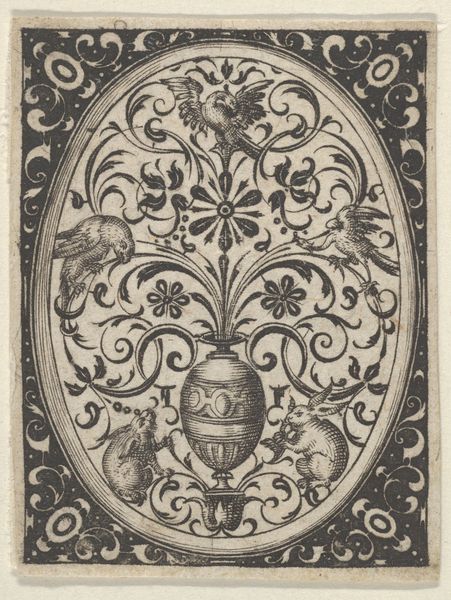
drawing, intaglio, engraving
#
drawing
#
light pencil work
#
pen drawing
#
pen sketch
#
intaglio
#
pencil sketch
#
old engraving style
#
figuration
#
11_renaissance
#
personal sketchbook
#
geometric
#
pen-ink sketch
#
line
#
pen work
#
sketchbook drawing
#
northern-renaissance
#
sketchbook art
#
engraving
Dimensions: height 144 mm, width 71 mm
Copyright: Rijks Museum: Open Domain
Heinrich Aldegrever designed this ornamental buckle in the 16th century, rendered with meticulous engraving. Notice how the profusion of foliage and the cherubic figure are not mere decoration; they are potent symbols deeply rooted in the cultural psyche. The stylized acanthus leaves, swirling around the frame, echo motifs found in classical antiquity, symbolizing regeneration and artistic inspiration. The cherub at the center, framed by radiating lines, evokes the divine and the innocent, harking back to its origins as symbols of heavenly love. Consider how similar motifs have traversed time and space. The acanthus, for example, appears in Roman architecture, later resurfacing in Renaissance art. The cherub evolves from pagan representations of Cupid to Christian angels. Such transformations reveal the fascinating journey of symbols, adapting, and morphing across cultures. These persistent motifs tap into our collective memory, triggering subconscious responses. The buckle, therefore, is more than an accessory. It encapsulates centuries of artistic evolution, continually reborn through human expression.
Comments
No comments
Be the first to comment and join the conversation on the ultimate creative platform.
